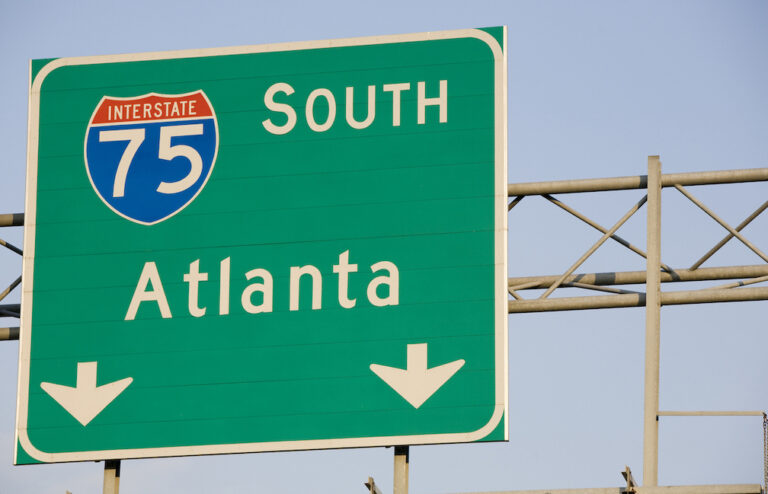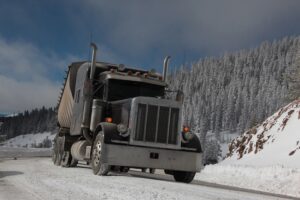WASHINGTON — Traffic congestion is a hot topic in most major cities.
Recently, the American Transportation Research Institute released its 14th annual list highlighting the most congested bottlenecks for trucks in America, with the interchange of Interstate 95 and State Route 4 in Fort Lee, New Jersey, ranking as the most congested freight bottleneck in the country.
What city had the most bottlenecks on the list?
Atlanta.
As Congress prepares to reauthorize the nation’s surface transportation programs, this timely analysis can help local, state, and federal governments target funding where it is needed most. ATRI’s analysis also quantifies the value of infrastructure investment through a spotlight on Chicago’s Jane Byrne Interchange. Once the number one truck bottleneck in the country for three years in a row, the recently constructed interchange saw rush hour truck speeds improve by nearly 25 percent after construction was completed.
“Delays inflicted on truckers by congestion are the equivalent of 436,000 drivers sitting idle for an entire year,” said ATRI President and COO Rebecca Brewster. “These metrics are getting worse, but the good news is that states do not need to accept the status quo. Illinois was once home to the top bottleneck in the country, but following a sustained effort to expand capacity, the Jane Byrne Interchange in Chicago no longer ranks in the top 10. This data gives policymakers a road map to reduce chokepoints, lower emissions, and drive economic growth.”
The 2025 Top Truck Bottleneck List measures the level of truck-involved congestion at more than 325 locations on the national highway system. The analysis, based on an extensive database of freight truck GPS data, uses several customized software applications and analysis methods, along with terabytes of data from trucking operations to produce a congestion impact ranking for each location. ATRI’s truck GPS data is also used to support the U.S. Department of Transportation Freight Mobility Initiative. The bottleneck locations detailed in this latest ATRI list represent the top 100 congested locations, although ATRI continuously monitors more than 325 freight-critical locations.
For the seventh year in a row, the intersection of I-95 and SR 4 near the George Washington Bridge in Fort Lee, New Jersey, is the top freight bottleneck in the country.
The Georgia capital had three on the Top 10 list including I-285 at I-85 (North), I-75 at I-285 (North), and I-20 at I-285 (West).
Others include two in Houston on I-45 at I-69/US 59, and I-10 at I-45, Nashville on I-24/I-40 at I-440 (East), Los Angeles on SR 60 at SR 57, and Cincinnati on I-71 at I-75.
ATRI’s analysis, which utilized data from 2024, found traffic conditions continue to deteriorate from recent years, in some instances due to work zones resulting from increased infrastructure investment. Average rush hour truck speeds were 34.2 MPH, down three percent from the previous year. Among the top 10 locations, average rush hour truck speeds were 29.7 MPH.
In addition to squandering time and money, these delays waste fuel – with trucks burning an estimated 6.4 billion gallons of diesel fuel and producing more than 65 million metric tons of additional carbon emissions while stuck in traffic jams.
“As the Trump Administration and new Congress kick off the process of reauthorizing the federal highway bill, this report provides a precise blueprint on where to begin,” said American Trucking Associations President and CEO Chris Spear. “These traffic bottlenecks not only choke our supply chains, adding $109 billion annually to the cost of transporting the everyday goods that Americans depend on, but they also impact the quality of life for all motorists who rely on the national highway system to commute to work, school, church, and other life events. Targeted investments to reduce this traffic congestion are exactly the kinds of projects, with a measurable return on investment, that taxpayers come to expect of their elected officials.”
Bruce Guthrie is an award-winning journalist who has lived in three states including Arkansas, Missouri and Georgia. During his nearly 20-year career, Bruce has served as managing editor and sports editor for numerous publications. He and his wife, Dana, who is also a journalist, are based in Carrollton, Georgia.











